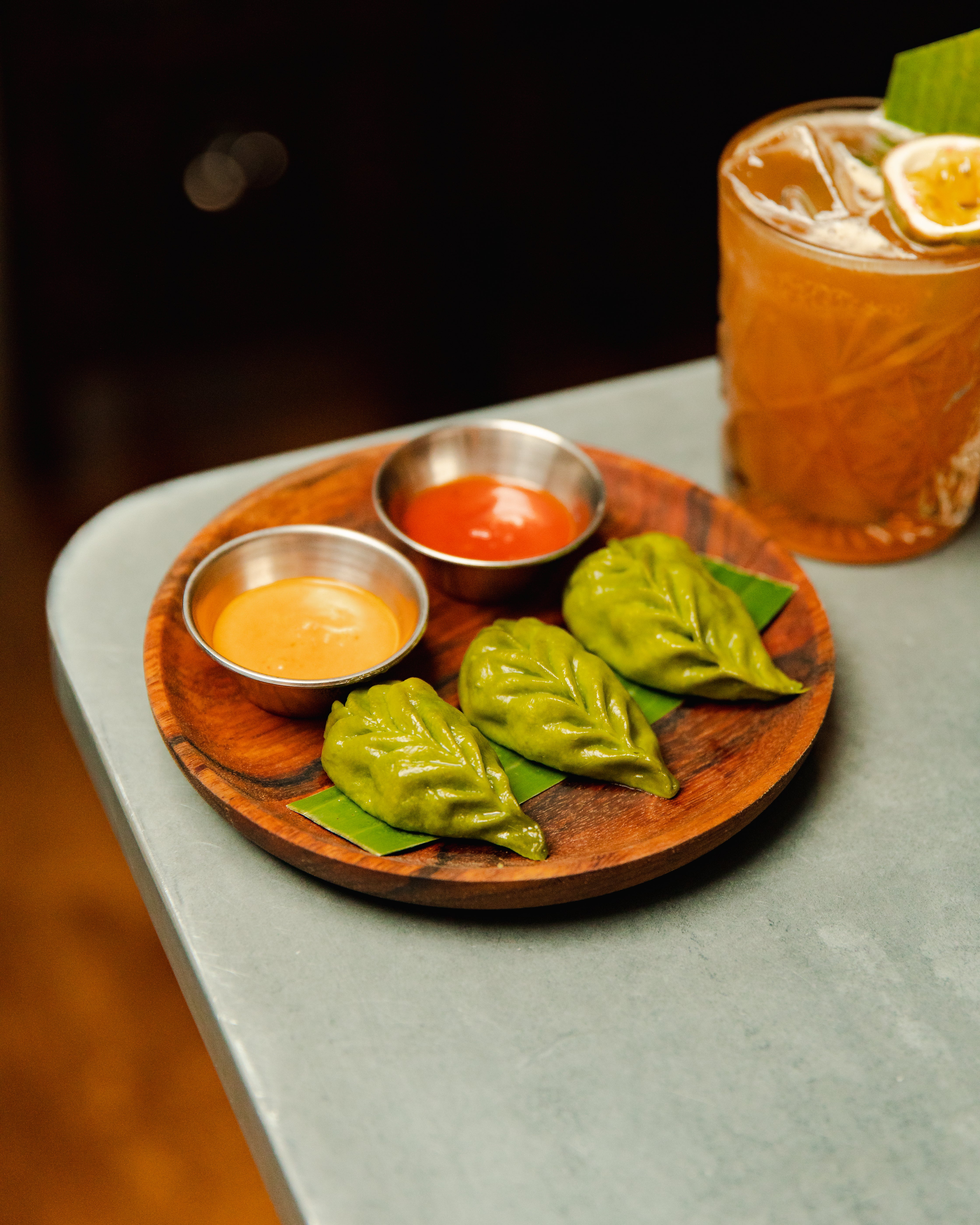
Transporting diners from Guangdong to Tangra since 2019, Huzefa and Hamza Sajawal, the minds behind Soho’s Fatt Pundit, are starting a new adventure in Covent Garden. The new restaurant will tell the story of the special melting pot of cultures found within India’s Chinese immigrant community.
Borrowing cult classics from the Berwick Street site, the new Fatt Pundit will bring fresh dishes and a new beverage concept to the forefront, starring signature cocktails inspired by the flavours and spices of India and China, and an unusal wine list, celebrating small, organic producers from all corners of the world.
Indo-Chinese cuisine is steeped in history and was created by those who emigrated from Canton and Guangdong in China with their rich gastronomic culture and settled in Kolkata and Mumbai, where they began incorporating Indian spices into these dishes. Fatt Pundit’s new menu will celebrate this unqiue diaspora cuisine.
We caught five minutes with co-founder Huzefa about this fascinating cuisine, his recommendations from the menu and his go-to comfort food.
In layman’s terms, what is Indo-Chinese food? What are some of the main flavours, ingredients or dishes to expect?
Simply put it’s food cooked using Chinese cooking techniques with spices and ingredients of Indian origin. A brief history: originating from Kolkata, India, a small population of Chinese people migrated to India, bringing with them their culinary treasures and style of cooking. Over a period of years they started cooking Chinese dishes such as dim sums, noodles and stir fry using local Indian ingredients and thereby creating a whole array of new dishes bursting with flavours never seen or tasted before.
The original Soho site had an almost cult-like following. What do you hope to achieve with the Covent Garden opening and how does it differ?
With Soho we were very clear from the get-go that it would be all about the food. We wanted to introduce this cuisine to London with no frills and recreate an experience that diners would have on the streets of Tangra, ie Chinatown in Kolkata. And we were overwhelmed with the response and the love we received from all our guests.
With the Covent Garden site, we wanted to get a slightly larger premise, where we could further add to the Fatt Pundit experience by telling the story a bit more, with more detailed decor and an improved drinks offering to pair with the food (which we aim to keep the same, if not better). We also wanted to be able to cater to bigger groups (which we couldn’t do at the Soho site since it’s slightly restricted in terms of space).
What is the restaurant scene like in Mumbai?
Well, Mumbai is now officially allowed to open 24 hours with a new policy in place and the dining scene is more vibrant than ever. On one hand, you have the best street/local foods India has to offer as well as international fine dining establishments such as Hakkasan and Yauatcha opening up there.
Indo-Chinese is an “assimilation cuisine” (when immigrants adapt to cooking in a new home) – how have you adapted to cooking the UK?
Working in a French restaurant and in one of the best steak houses in London, with some very passionate chefs, has had a huge influence on me. I become very open to trying out new restaurants and cuisines with them. I also learnt the importance of sourcing good ingredients.
So now I am equally proud of cooking a dry aged côte de boeuf or croque monsieur as I am of making a slow cooked Suffolk lamb biryani.
If I’m visiting Fatt Pundit tonight, what should I order?
Well, it’s tough to choose… normally for a table of two we suggest 6-8 dishes so that you get to experience a variety of flavours. Although a few must haves are: you have to start with momos. Kid goat momo are my favourite! Some other favourites include the crackling spinach, black bean dusted lamb chops and monkfish curry with ginger rice.

Tell us about some of the excellent producers that feature on the menu and wine list.
Sourcing is extremely important for us at Fatt Pundit. Our suppliers work very hard to get us some products which are hard to get on a regular basis.
For example, our kid goat meat comes from Cabrito Meats, who supply us with goat meat from British dairy farms, which is quite rarely consumed in the UK. Although, with more awareness of how delicious it actually is, it’s on an upward trend.
For our kala khatta mojito (black currant mojito) we ship a special black currant syrup from Maharashtra in India, which is not available here in the UK.
We have a couple of Chinese wines on the menu, which pair beautifully with our food. For example, Chateau Changyu Moser XV, Cabernet sauvignon. This blanc de noir is definitely the first ever white Cabernet Sauvignon from China. And it goes wonderfully with the Malabar tiger prawn curry at Fatt Pundit.
Domaine Wardy Beqaa Valley red, Lebanon, is an amazing new, organic, unoaked red wine.
If you could fuse any two other cuisines, what would they be?
My partner is Italian and a wonderful cook; I can’t help but think that Indian-Italian fusion could lead to some creative and flavoursome dishes as they both share a very similar base in cooking with lots of garlic, tomatoes and fresh herbs.
You have five ingredients. What are they and what are you making?
Since I have a sweet tooth, I would cook one of my favourites: my grandmom’s recipe for rice pudding.
These ingredients are the key to this simple dish: full fat milk, kolam rice (short grain rice), Kashmiri saffron, jaggery (cane sugar) and green cardamom (freshly ground).
After a long day juggling multiple restaurants, what’s your go-to comfort food? (No judgement, promise!)
Would have to be a simple home cooked meal (ideally by Mom) with some lentils, vegetables and rice.







